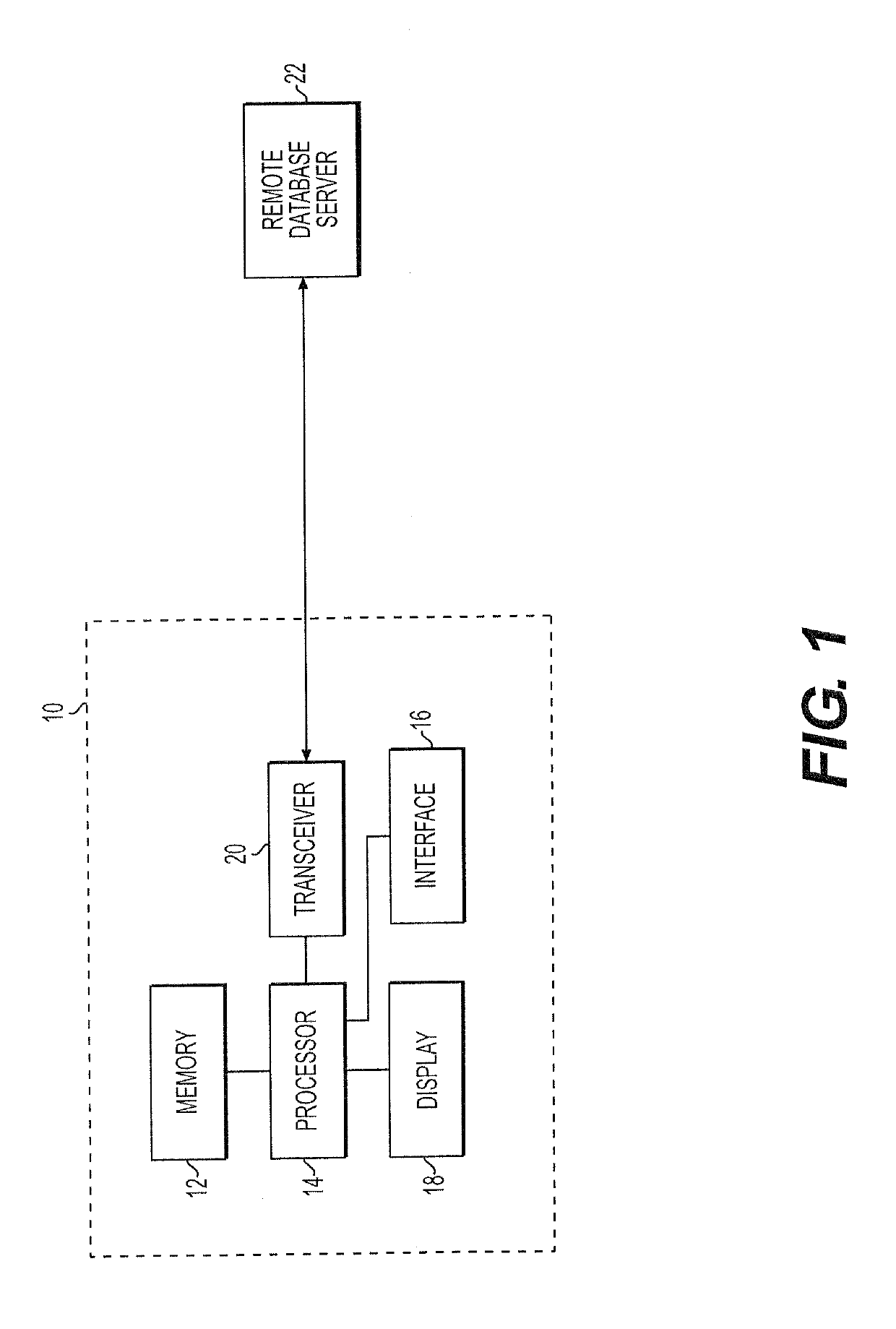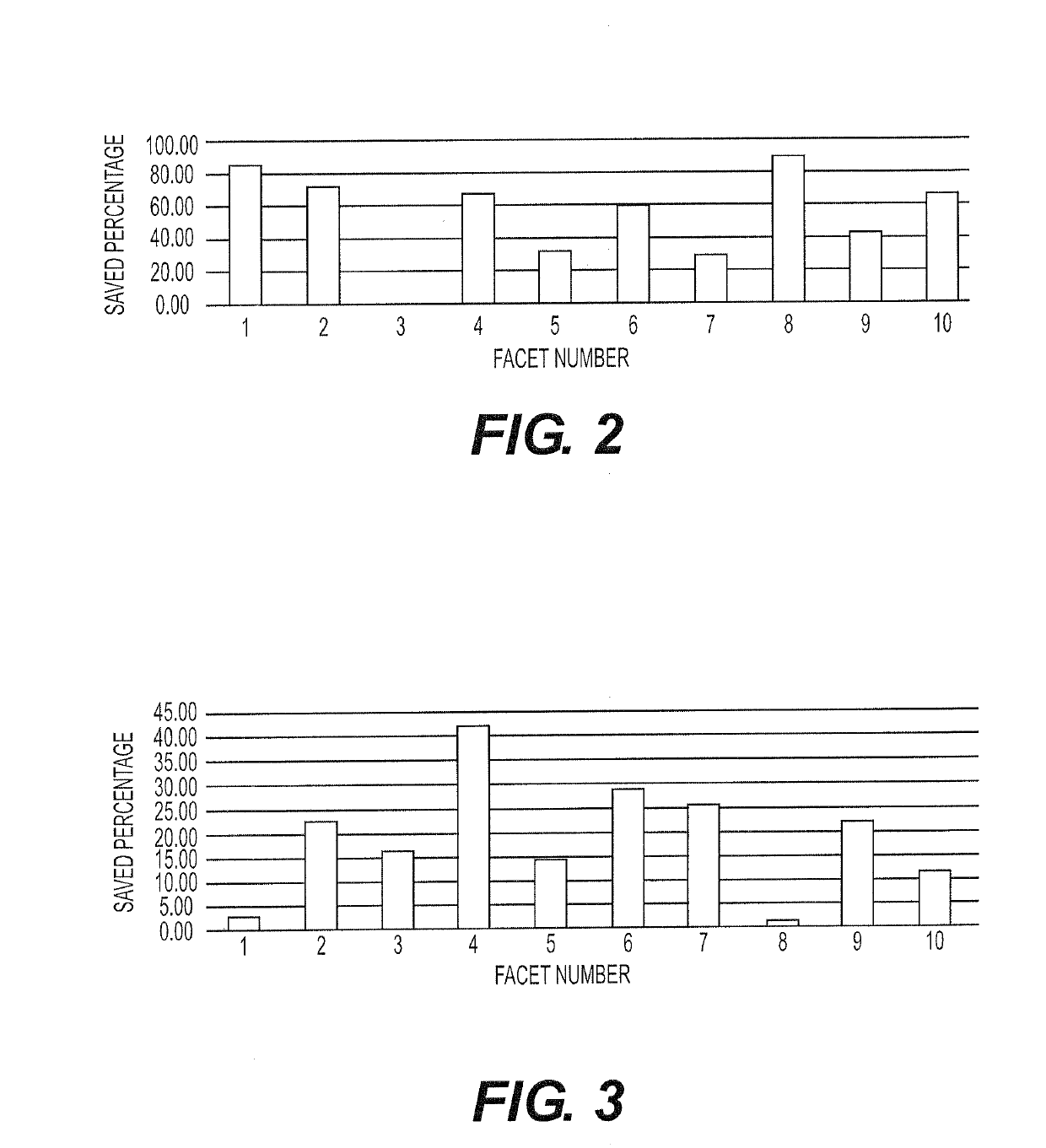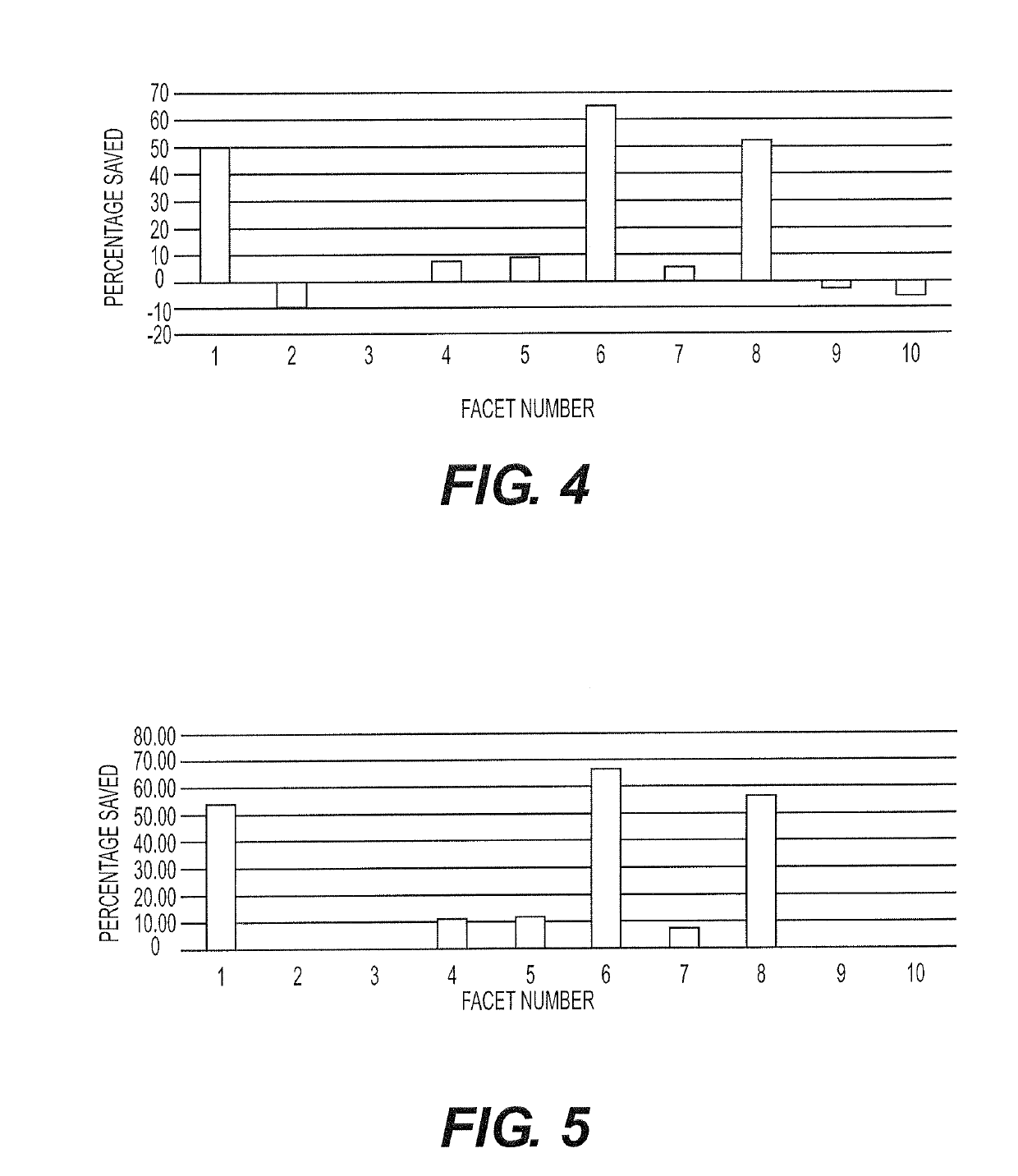Method of facet-based searching of databases
- Summary
- Abstract
- Description
- Claims
- Application Information
AI Technical Summary
Benefits of technology
Problems solved by technology
Method used
Image
Examples
Embodiment Construction
[0028]The method of facet-based searching of databases uses a facet ranking scheme for the searching and information retrieval from large scale, semantic databases, such as semantic biological databases. The method of facet-based searching of databases includes a ranking scheme for facet values to order them by their significance to a search query. The method of facet-based searching of databases also includes a subsequent scheme to present the user with a narrowed set of facet values when a large number of choices are available. In biological databases, for example, users are typically interested in finding average or extreme values. Thus, the user is able to narrow the set of facet values to values that are average, most common, least common and / or most / least significant in a search result. Additionally, the facets themselves can be ordered according to their usefulness in narrowing down the search.
[0029]The method of facet-based searching of databases may be implemented using the...
PUM
 Login to View More
Login to View More Abstract
Description
Claims
Application Information
 Login to View More
Login to View More - R&D
- Intellectual Property
- Life Sciences
- Materials
- Tech Scout
- Unparalleled Data Quality
- Higher Quality Content
- 60% Fewer Hallucinations
Browse by: Latest US Patents, China's latest patents, Technical Efficacy Thesaurus, Application Domain, Technology Topic, Popular Technical Reports.
© 2025 PatSnap. All rights reserved.Legal|Privacy policy|Modern Slavery Act Transparency Statement|Sitemap|About US| Contact US: help@patsnap.com



